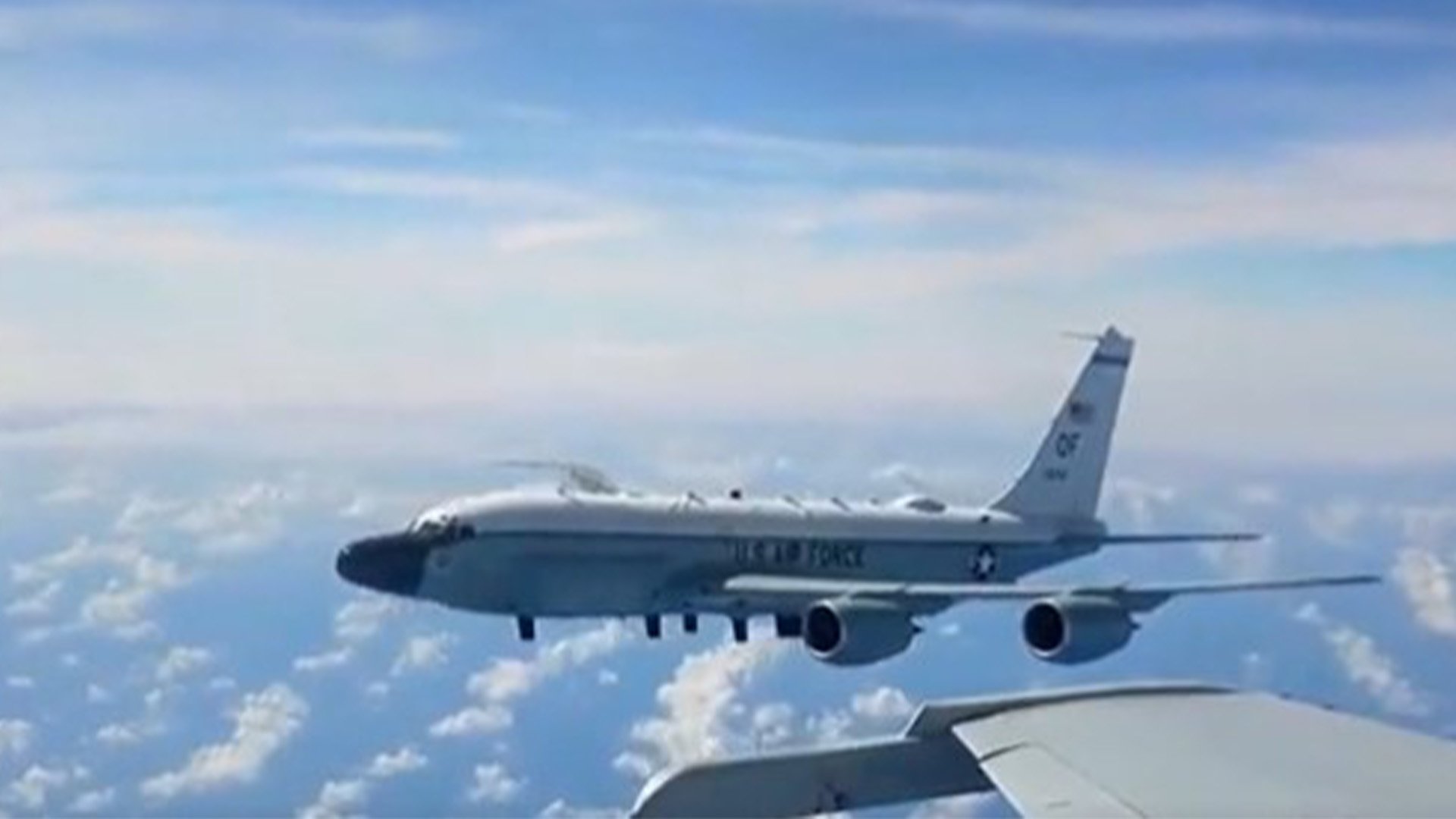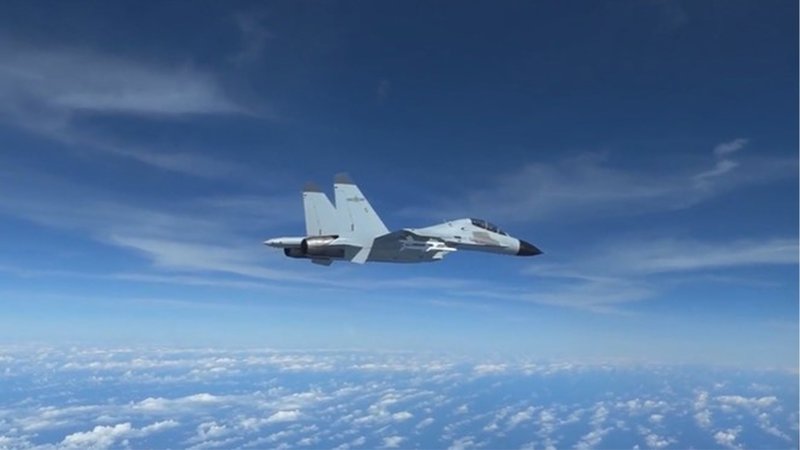
On Saturday, Dec. 31, China’s Southern Theater Command released an 18-second video on social media that claimed a US Air Force RC-135V Rivet Joint reconnaissance aircraft 10 days earlier near the Paracel Islands had “deliberately changed its flight altitude” and “approached our plane dangerously," before "squeezing" it to port. Screenshot from Southern Theater Command video.
Ringing in the New Year, Chinese military officials fired back at allegations a People’s Liberation Army Navy fighter pilot dangerously buzzed a US Air Force spy plane.
On Saturday, Dec. 31, China’s Southern Theater Command released an 18-second video on social media that claims a US RC-135V Rivet Joint reconnaissance aircraft “deliberately changed its flight altitude” and “approached our plane dangerously,” before it "squeezed" the fighter pilot, making him turn to port to avoid a collision.
The incident occurred at 11:25 a.m. on Dec. 21 above the South China Sea, with the US spy plane crew repeatedly ignoring warnings from the naval pilot of the J-11BSH Shenyan (Flanker-L+) fighter pilot, according to the Southern Theater Command video.
But US Indo-Pacific Command officials have offered a very different version of what happened.

US Indo-Pacific Command officials claim a Chinese fighter pilot buzzed the nose of a US Air Force RC-135V Rivet Joint reconnaissance aircraft over the South China Sea on Dec. 21, 2022. US Indo-Pacific Command photo.
In a release issued Thursday, US officials alleged the US crew — most likely from the 82nd Reconnaissance Squadron, originating from Kadena Air Base on the Japanese island of Okinawa — took evasive actions to prevent a collision when the Chinese fourth-generation fighter came within 20 feet of the plane’s nose.
Although US officials declined to pinpoint where the incident occurred, China’s Southern Theater Command disclosed Saturday that the US plane was trying to snoop on the Paracel Islands, what Beijing calls the “Xisha Islands.”
They’re a sprawl of islets and rocks the Chinese military has fortified and armed with missile batteries, in a line running roughly 130 nautical miles southeast of Hainan Island. The Paracels are also claimed by Vietnam and Taiwan.
On Saturday, Indo-Pacific Command officials did not respond to Coffee or Die Magazine’s requests for comments about the Chinese video.
Read Next: CENTCOM: US, Partners, Beating ‘Degraded’ Islamic State Group

Carl Prine is a former senior editor at Coffee or Die Magazine. He has worked at Navy Times, The San Diego Union-Tribune, and Pittsburgh Tribune-Review. He served in the Marine Corps and the Pennsylvania Army National Guard. His awards include the Joseph Galloway Award for Distinguished Reporting on the military, a first prize from Investigative Reporters & Editors, and the Combat Infantryman Badge.
BRCC and Bad Moon Print Press team up for an exclusive, limited-edition T-shirt design!
BRCC partners with Team Room Design for an exclusive T-shirt release!
Thirty Seconds Out has partnered with BRCC for an exclusive shirt design invoking the God of Winter.
Lucas O'Hara of Grizzly Forge has teamed up with BRCC for a badass, exclusive Shirt Club T-shirt design featuring his most popular knife and tiomahawk.
Coffee or Die sits down with one of the graphic designers behind Black Rifle Coffee's signature look and vibe.
Biden will award the Medal of Honor to a Vietnam War Army helicopter pilot who risked his life to save a reconnaissance team from almost certain death.
Ever wonder how much Jack Mandaville would f*ck sh*t up if he went back in time? The American Revolution didn't even see him coming.
A nearly 200-year-old West Point time capsule that at first appeared to yield little more than dust contains hidden treasure, the US Military Academy said.












